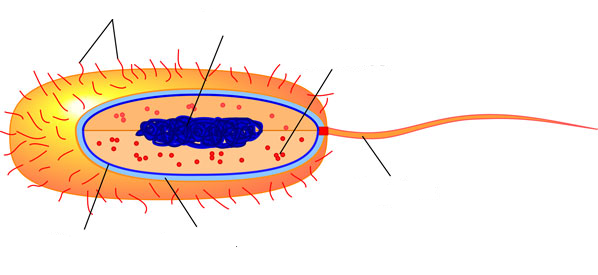Chapter 4 - Cell Structure and Function
Robert Hooke - First person to see cells, he coined the term "cell" for the great many boxes he saw under the microscope
Anton van Leeuwenhoek – saw first living single celled organisms (animalcules)
The Cell Theory
( Shwann | Shleiden | Virchow )
1. Every living organism is made of one or more cells
2. Cells are the functional unit of multicellular organisms
3. Cells arise from pre-existing cells
Cell Size
atoms --> DNA --> virus --> bacteria (Prokaryotes) -->mitochondria--> Eukaryotic cells
Cells must remain small in size due to the ratio of surface area and volume
As the cell increases in size, its surface area becomes too small to support its internal structures. Oxygen and other important substances cannot diffuse fast enough. Cells that get too large, may divide.
All Cells Have Three Basic Features: Cell Membrane, Genetic Material, Cytoplasm
1. Plasma Membrane (aka Cell Membrane)
Isolates cytoplasm from external environment
2. regulates flow or material into and out of the cell
3. allows interaction with other cells
2. Genetic Material
1. provides cellular "blueprint" that controls the functions of the cell
2. In the form of DNA (Deoxyribonucleic acid)
3. DNA is universal for all cells, an all living things - evidence of common ancestry
4. Chromatin is the complex of proteins and DNA, it condenses into chromosomes before cell division
3. Cytoplasm (aka cyosol)
1. inside plasma membrane
2. contains water, salts, and other chemicals
3. organelles float within this jelly-like substance
Prokaryote vs Eukaryote Cells
Prokaryotes
- no membrane bound nucleus, chromosomes grouped together in an area called the "nucleoid"
- no membrane bound organelles
- smaller than eukaryotes
- have cell wall and cell membrane, some have a capsule on the outside
- ribosomes make protein
- consist of bacteria and archaebacteria
- Appendages include: fimbriae, pili, flagella
Label the Bacteria

Eukaryotes
- has a membrane bound nucleus
- has membrane bound organelles in cytoplasm
- Organelles perform specific functions
- much larger than prokaryotes
animals, plants, fungi, protists

Endosymbiosis theory: All organelles seem to share many properties with bacteria. Lynn Margulis proposed endosymbiont hypothesis: that organelles derived from ancient colonization of large bacteria (became the eucaryotic cell) by smaller bacteria (became the mitochondria, chloroplast, etc.) Symbiosis = living together.